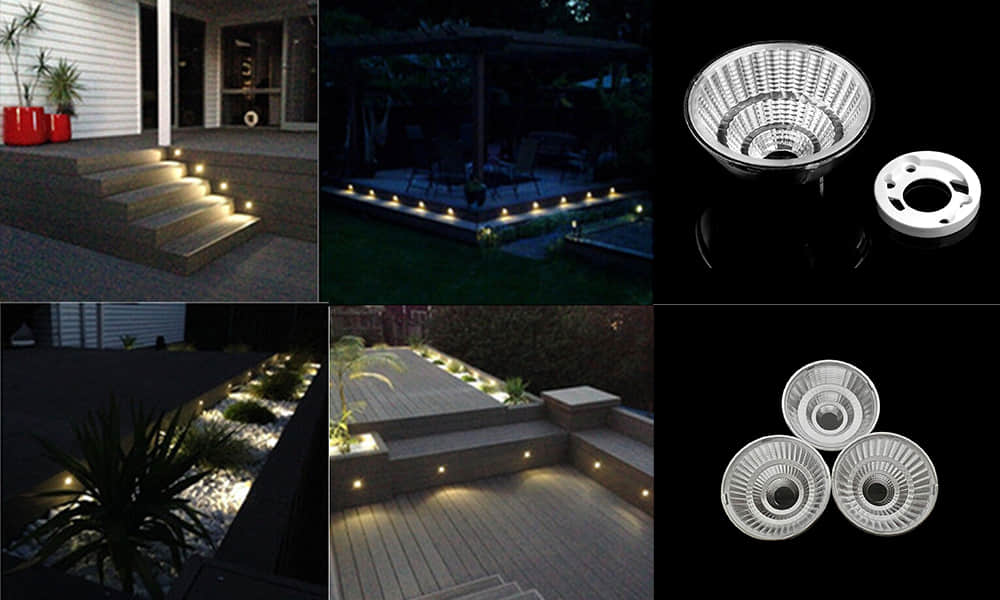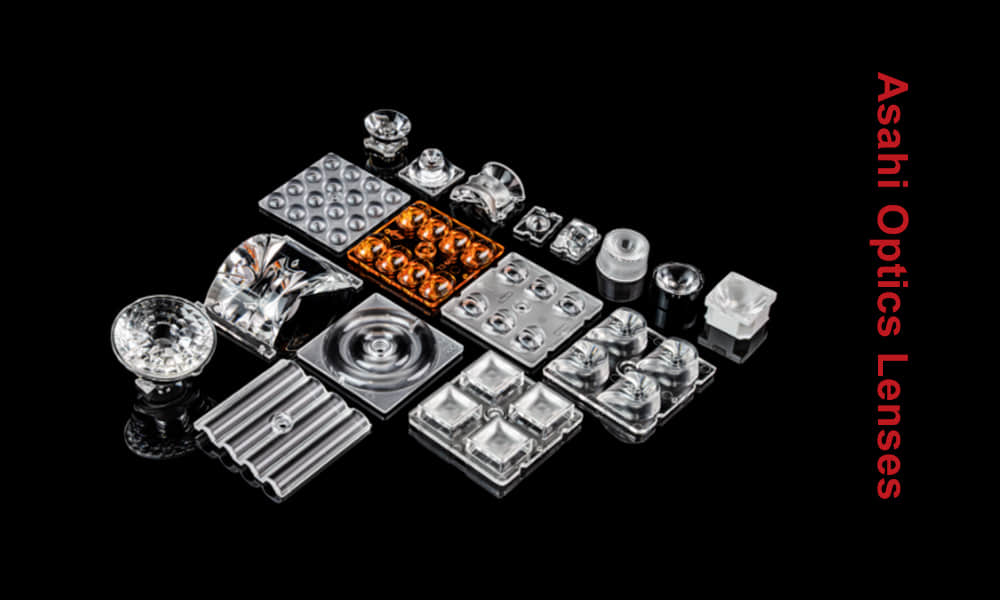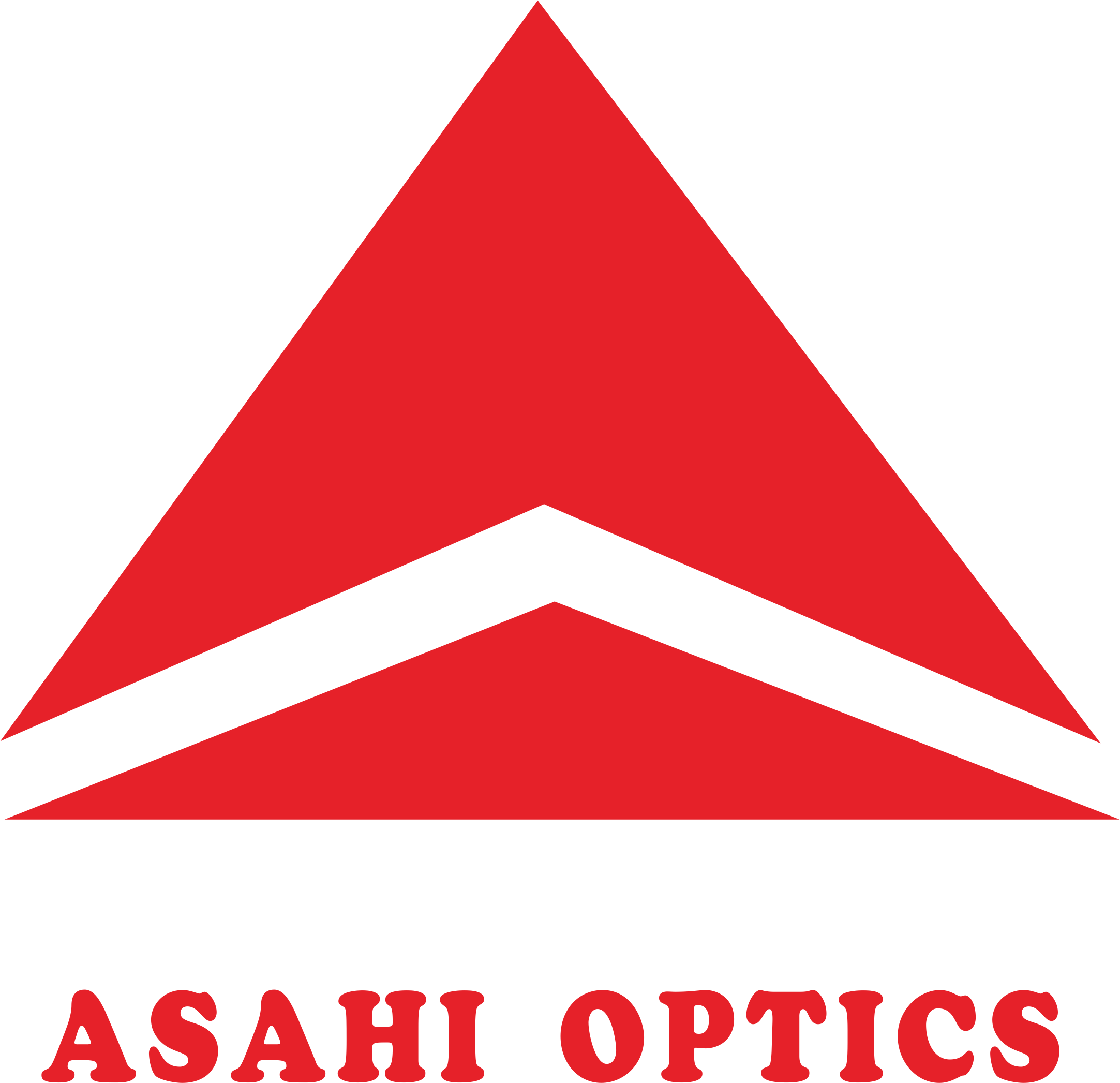In the era of energy-efficient LED lighting, precise and effective light control is crucial for achieving superior lighting results. There are two primary light control components in LED lighting: reflectors and optical lenses.
Each possesses unique advantages and applications, and together they form the cornerstone of modern lighting design. As an expert in optical solutions, Asahi Optics will delve into the principles, characteristics, selection strategies, and synergistic application of these two components to help customers achieve optimal lighting results.
Light control components in LED lighting: reflectors and optical lenses
1.Reflector
Principle: Reflectors primarily utilize the laws of reflection to control light. They are typically made of highly reflective materials (such as aluminum, silver, or coated plastic). Their internal geometry reflects light from the LED chip toward a target area.

Features and Advantages:
- Soft Light Spot: Reflectors typically produce a softer, more uniform light spot with smooth edge transitions.
- Relatively Low Cost: The manufacturing process is relatively simple, resulting in high cost-effectiveness.
- Excellent Heat Dissipation: Reflectors are often integrated into the luminaire housing, helping to dissipate heat from the LED chip.
- Suitable for Wide-Angle Light Distribution: They easily achieve wide-angle floodlighting and are suitable for ambient lighting.
Limitations:
- Relatively Low Light Distribution Accuracy: They struggle to achieve very narrow beams or complex, precise light distribution.
- Limited Luminous Efficiency: The reflection process results in a certain amount of light loss.
2. Optical Lens
Principle: Optical lenses primarily utilize the principles of refraction and total internal reflection (TIR) to control light. By redirecting light as it passes through different media, they collect, collimate, shape, and redistribute light emitted by LED chips.

Features and Advantages:
- High Light Distribution Accuracy: Enables highly precise beam control, including narrow and elliptical beams, to meet specific lighting needs.
- High Luminous Efficiency: TIR lenses, in particular, maximize light collection and utilization, minimizing light loss.
- Excellent Glare Control: Precise optical design effectively controls the light output angle, significantly reducing glare.
- Compact Design: Suitable for fixtures with strict space requirements.
Limitations:
- Relatively High Cost: The design and manufacturing process is more complex, requiring high material precision.
- Heat Dissipation Considerations: The lens is typically in close proximity to the LED chip, requiring consideration of heat dissipation design.
When to choose a reflector and when to choose a lens?
The choice of reflector or lens depends mainly on the specific application scenario and lighting requirements:
| Features/Application Scenarios | Reflector | Optical Lens |
|---|---|---|
| Light Control | Soft, uniform, wide-angle | Precise, diverse, controllable |
| Light Efficiency | Good | Excellent (especially TIR) |
| Glare Control | Relatively weak | Excellent |
| Cost | Lower | Higher |
| Typical Applications | Flood lighting, Ambient lighting, Basic indoor lighting | Spot lighting, High mast lighting, Road lighting, Automotive lighting, Stadium lighting |
Choosing a reflector: When you need wide-area, soft, uniform floodlight, don't require precise light distribution, and have a limited budget, a reflector is a more cost-effective option. Examples include certain indoor ambient lighting, decorative lighting, or commercial lighting that requires a soft light spot.
Choosing an optical lens: When you require precise light distribution, strict glare control, high light efficacy, or a specific beam shape, an optical lens is an indispensable option. Examples include stadium lighting, street lighting, office lighting, automotive lighting, and retail lighting that needs to highlight product details.
